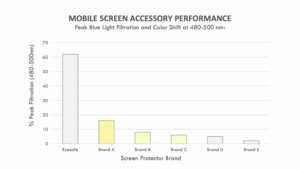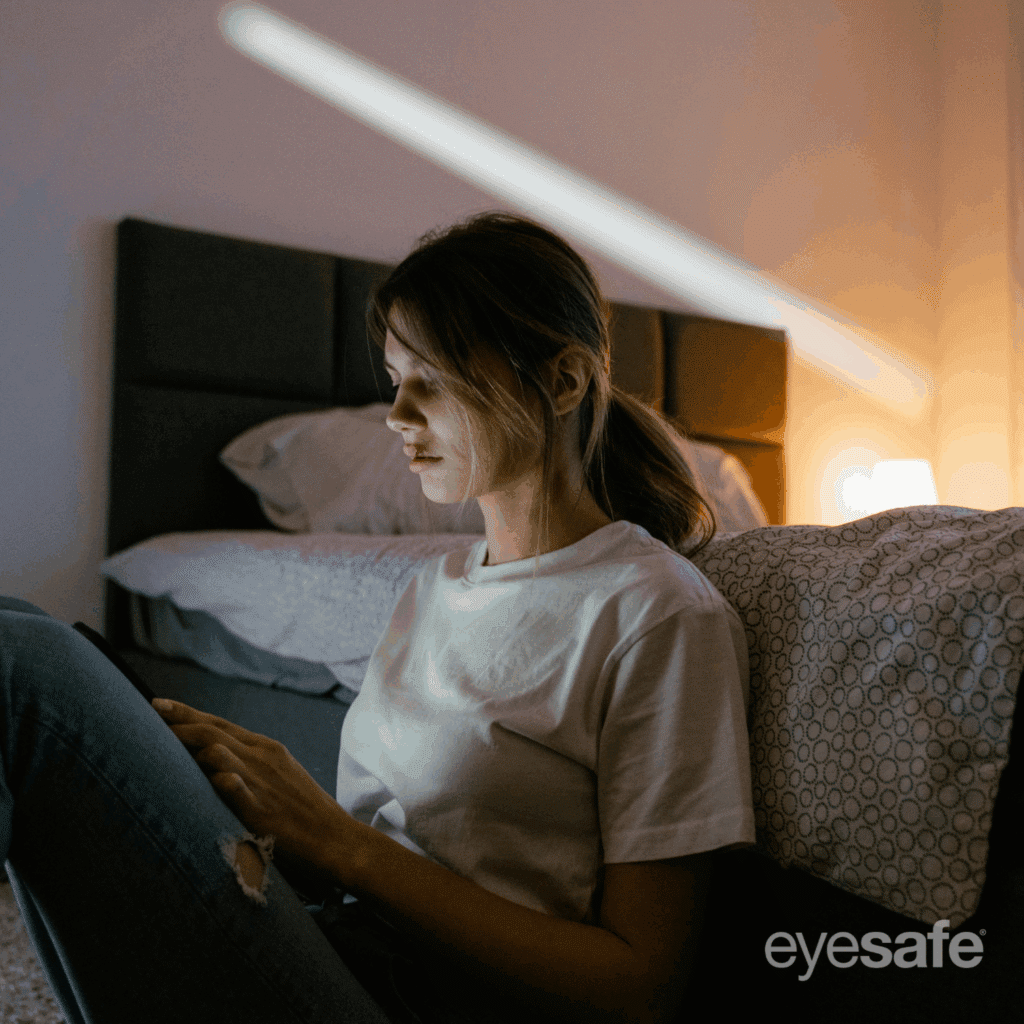The Growing Demand for Blue Light Protection
Rising screen time has more people looking to blue light screen protectors for visual comfort and better sleep. Yet not every product delivers meaningful results. Eyesafe experts emphasize what truly matters is whether a screen protector is engineered to target the specific wavelengths of blue light most associated with visual comfort and circadian health.
The Science of Wavelengths
Blue light spans 380–500 nanometers (nm). Two ranges are especially important:
-
- 435–440 nm — linked to oxidative stress and potential long-term visual effects1
- 480–500 nm — linked to melatonin suppression and delayed sleep onset2
Dr. David Friess, OD, FAOO, a member of the Eyesafe Vision Health Advisory Board, highlights:
“We know that not all blue light is equally disruptive. Screen protectors that target the 435–440 nm and 480–500 nm wavelengths are far more effective at supporting visual comfort and healthy sleep patterns.”
Laptops vs. Mobile Devices: Different Needs
- Laptops & Monitors: Since they are typically used during the day, laptops and monitors benefit from protectors that reduce blue light at 435–440 nm, supporting visual comfort during long use.
- Phones & Tablets: It’s more important to filter blue light at 480–500 nm, as these devices are often used at night when circadian disruption is most likely.
- Effective solutions should adapt wavelength targeting to the device and user habits.
Do They Deliver?

What Really Matters When Choosing a Screen Protector
When choosing a blue light screen protector, terms like “blue light blocking” can often be vague or misleading. The most effective solutions are those that target the critical blue light wavelengths of 435–440 nm and 480–500 nm, are independently tested and verified, and are developed with leading eye doctors.
The takeaway is clear: the best protectors use targeted filtration to reduce disruptive blue light while preserving brightness and color accuracy, supporting both visual comfort and circadian health.
Sources
1 Cougnard-Gregoire A, Merle BMJ, Aslam T, Seddon JM, Aknin I, Klaver CCW, Garhöfer G, Layana AG, Minnella AM, Silva R, Delcourt C. Blue
Light Exposure: Ocular Hazards and Prevention-A Narrative Review, Ophthalmol Ther. 2023 Apr;12(2):755-788. doi: 10.1007/s40123-023-00675-3. Epub 2023 Feb 18. PMID: 36808601; PMCID: PMC9938358, https://www.ncbi.nlm.nih.gov/pmc/articles/PMC9938358
2 Chang AM, et al. Evening use of light-emitting eReaders negatively affects sleep, circadian timing, and next-morning alertness. Proceedings of the National Academy of Sciences of the United States (PNAS). January 2015. 112(4): 1232-1237.
